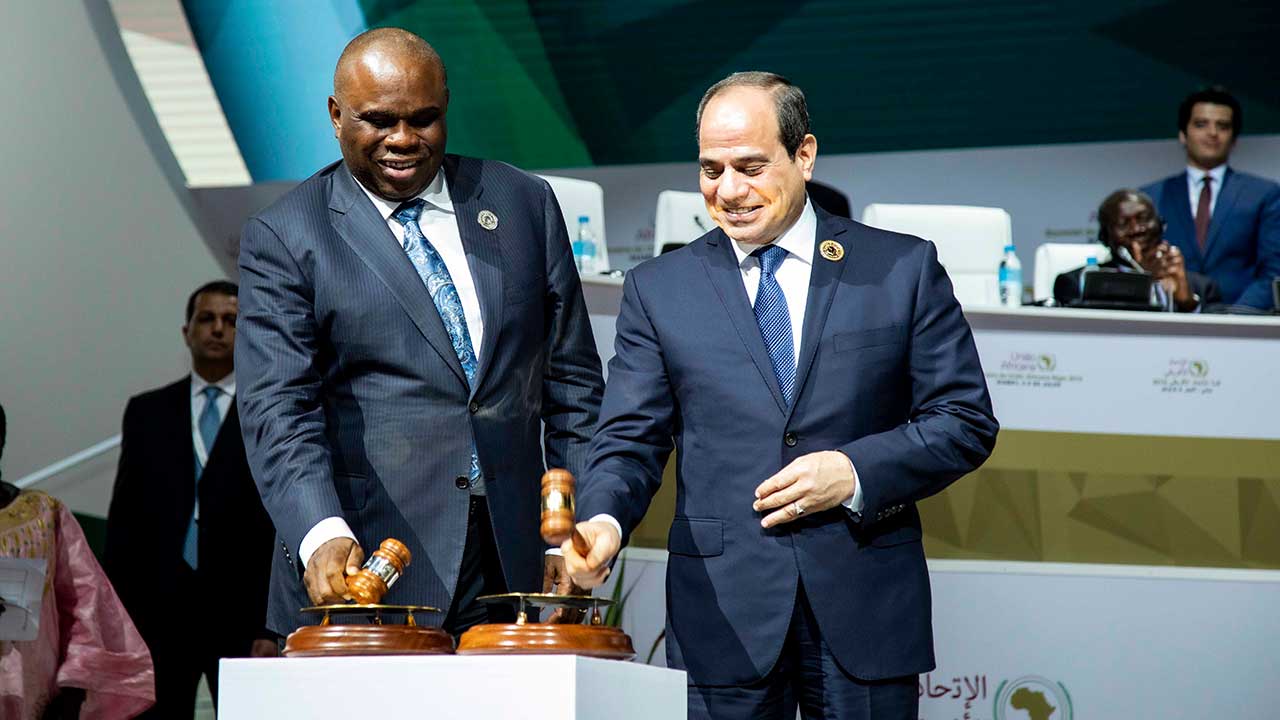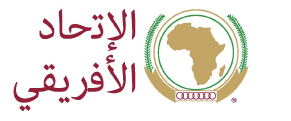Operational Phase Of The African Continental Free Trade Area Launched
Operational Phase Of The African Continental Free Trade Area Launched

(right): H.E. Abdel Fattah al-Sissi - President of the Arab Republic of Egypt and Chairperson of the African Union and (left): Dr. Benedict Okey Oramah - Chairperson of Afreximbank launching the operational phase of the African Continental Free Trade Area at the African Union 2019 July Summit in Niamey, Niger
The 12th Extraordinary summit of the African Union which was held in Niamey on the 7th of July 2019 was a momentous occasion for Africa, as it saw the successful launching of the operational phase of the African Continental Free Trade Area (AfCFTA). The AfCFTA agreement was adopted and opened for signature on 21 March 2018 in Kigali and entered into force on 30 May 2019.
The launch ceremony included “a roll call of honour” during which the 27 countries that had ratified the instruments of the AfCFTA as at 7th July 2019 were announced, and the 28 countries which had signed but not yet ratified were also announced with only one member state, Eritrea, yet to sign. A commemorative plaque was unveiled to mark the occasion and the announcement of the selection of Ghana to host the AfCFTA secretariat was also made.
The launch of the operational phase was characterised by the adoption of five key instruments
- The Rules of Origin: A regime governing the conditions under which a product or service can be traded duty free across the region
- The Tariff concessions: It has been agreed that there should be 90% tariff liberalisation and the deadline is 1st July 2020. Over a 10 year period with a 5 year transition, there will be an additional 7 % for “sensitive products" that must be liberalised
- The online mechanism on monitoring, reporting and elimination of non-tariff barriers, NTBs: NTBs are a great hindrance to intra African trade whether physical, like poor infrastructure, or administrative like the behaviour of customs officials. These are to be monitored with a view to ensuring they are eliminated.
- The Pan-African payment and settlement system: To facilitate payments on time and in full, by ensuring that payments are made in local currency and at the end of the year there’ll be net settlements in foreign exchange. With the certainty of payments, there will be confidence in the system.
- The African Trade Observatory: A trade information portal to address hindrances to trade in Africa due to lack of information about opportunities, trade statistics as well as information about exporters and importers in countries. The trade observatory will have all this information and other relevant data which will be provided by AU member states
The significance of the African Continental Free Trade Area
The AfCFTA will be the largest free trade area since the formation of the World Trade Organisation, given Africa’s current population of 1.2 billion people, which is expected to grow to 2.5 billion by 2050. Some of its expected benefits include:
- Increasing trade among African countries which currently ranges between 15-18%.
- Stimulate production through the development of regional value chains, to ensure that manufacturing, agro processing and other activities across the continent are stimulated to supply the market.
- Strengthen the capacities of African companies to access and supply world markets.
- Strengthen African’s economic and commercial diplomacy.
The commencement of trading within the AfCFTA is slated for 1st July 2020.
Role of the AfCFTA secretariat
The Secretariat will facilitate the efficient conduct of business of the AfCFTA. It will develop the working programme and the annual budget and implement the decisions of the Ministers and Heads of State and Government. Until the secretariat which is to be hosted in Ghana is fully operational, the AU Commission will be the interim secretariat.



